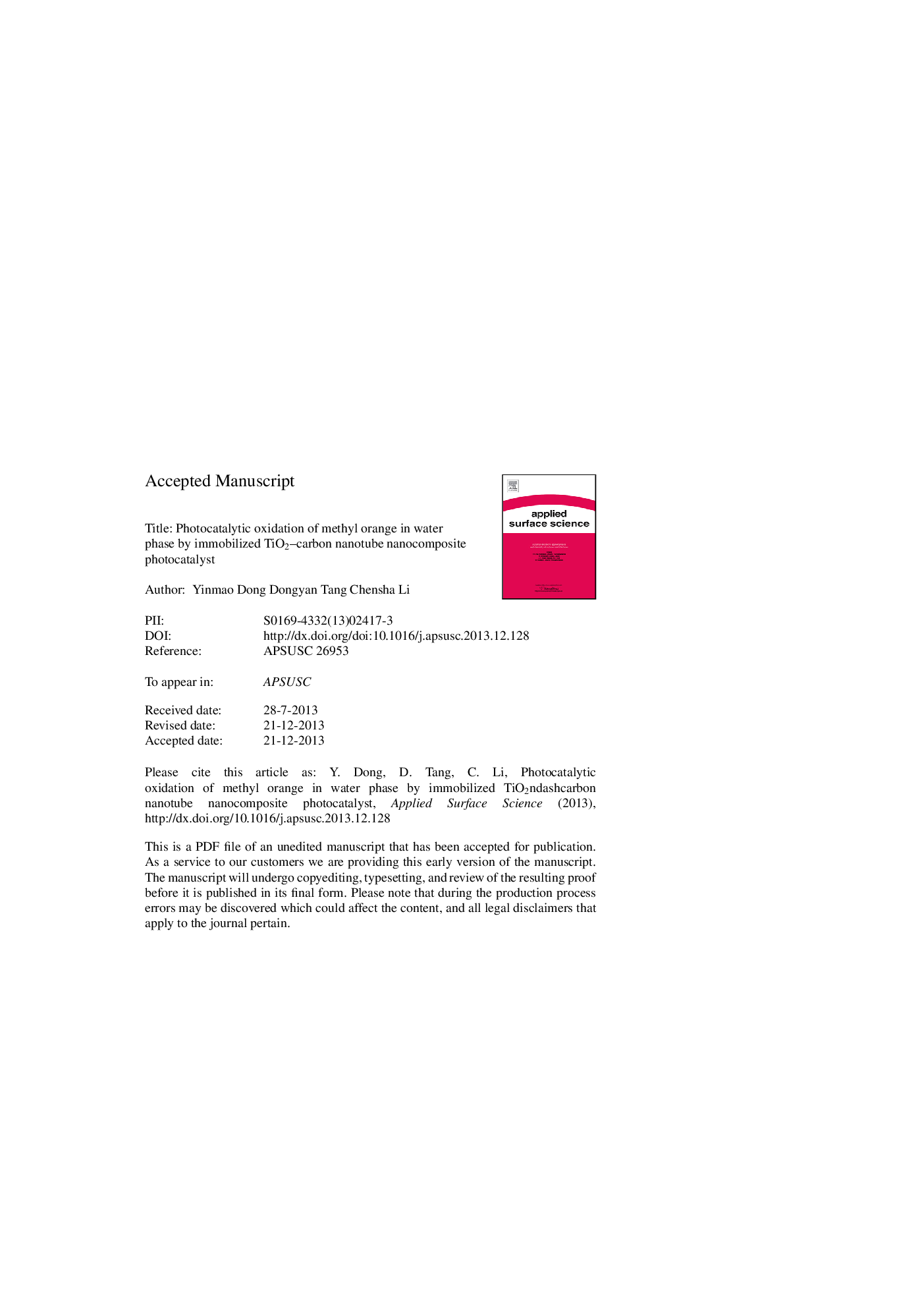| Article ID | Journal | Published Year | Pages | File Type |
|---|---|---|---|---|
| 5359560 | Applied Surface Science | 2014 | 26 Pages |
Abstract
We developed an immobilized carbon nanotube (CNT)-titanium dioxide (TiO2) heterostructure material for the photocatalytic oxidation of methyl orange in aqueous phase. The catalyst material was prepared via sol-gel method using multi-walled CNTs grown on graphite substrate as carriers. The multi-walled CNTs were synthesized from thermal decomposing of hydrocarbon gas directly on thin graphite plate, forming immobilized 3-dimensional network of CNTs. The nanophase TiO2 was synthesized coating on CNTs to form “coral”-shaped nanocomposite 3-dimensional network on graphite substrate, thus bringing effective porous structure and high specific surface area, and possessing the merit of dispersive powder photocatalysts, which is the fully available surface area, while adapting the requirement for clean and convenient manipulation as an immobilized photocatalyst. Moreover, the CNT-TiO2 heterostructure reduced the electron-hole pair recombination rate and enhanced the photoabsorption and the adsorption ability, resulting in elevating the photocatalysis efficiency. These synergistic effects due to the hybrid nature of the materials and interphase interaction greatly improved the catalytic activity, and demonstrated superior photocatalytic performances. Our work can be a significant inspiration for developing hybrid nano-phase materials to realize sophisticated functions, and bear tremendous significance for the development and applications of semiconductor nano-materials.
Related Topics
Physical Sciences and Engineering
Chemistry
Physical and Theoretical Chemistry
Authors
Yinmao Dong, Dongyan Tang, Chensha Li,
